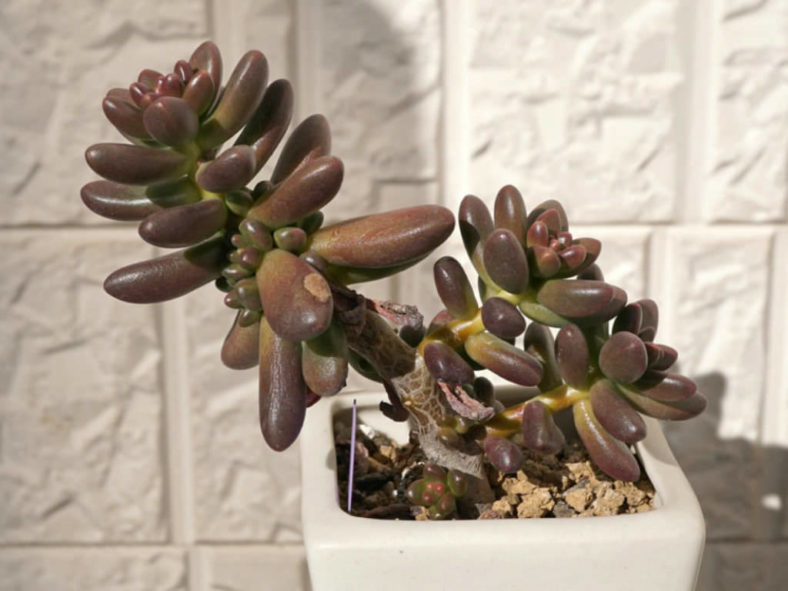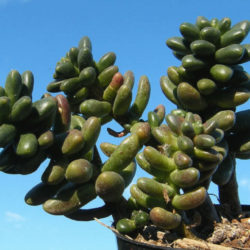Scientific Name
×Cremnosedum 'Crocodile'
Scientific Classification
Family: Crassulaceae
Subfamily: Sempervivoideae
Tribe: Sedeae
Nothogenus: ×Cremnosedum
Description
×Cremnosedum 'Crocodile' is a small shrubby succulent with short, sparsely branching stems and bead-like, dark green leaves that become deep red to reddish-brown in full sun. The stems are prostrate to ascending and have an interesting reptilian-like scaling.
The white, star-shaped flowers appear in clusters on short stalks in spring.
Origin
×Cremnosedum 'Crocodile' is a hybrid created by Robert (Bob) Grim (1914–2011) and his wife Margaret of San Jose, California, United States. It results from a cross between Cremnophila nutans and Sedum furfuraceum.

Hardiness
USDA hardiness zone 8b to 10a: from 15 °F (−9.4 °C) to 35 °F (+1.7 °C).
How to Grow and Care
When growing Sedum, keep in mind that plants need very little attention or care. They will thrive in conditions that many other plants thrive in but will do just as well in less hospitable areas. They are ideal for that part of your yard that gets too much sun or too little water to grow anything else. A common name for Sedum is Stonecrop because many gardeners joke that only stones need less care and live longer.
Sedum is easily planted. Simply laying the plant on the ground for shorter varieties where you want it to grow is normally enough to get the Sedum plant started there. They will send out roots from wherever the stem is touching the ground and root itself. If you want to ensure that the plant will start there, you can add very thin soil covering the plant. You can break off one of the stems for taller Sedum varieties and push it into the ground where you want to grow it. The stem will root very easily, and a new plant will be established in a season or two.
See more at How to Grow and Care for Sedum.
Links
- Back to nothogenus ×Cremnosedum
- Succupedia: Browse succulents by Scientific Name, Common Name, Genus, Family, USDA Hardiness Zone, Origin, or cacti by Genus
Photo Gallery
Click on a photo to see a larger version.


